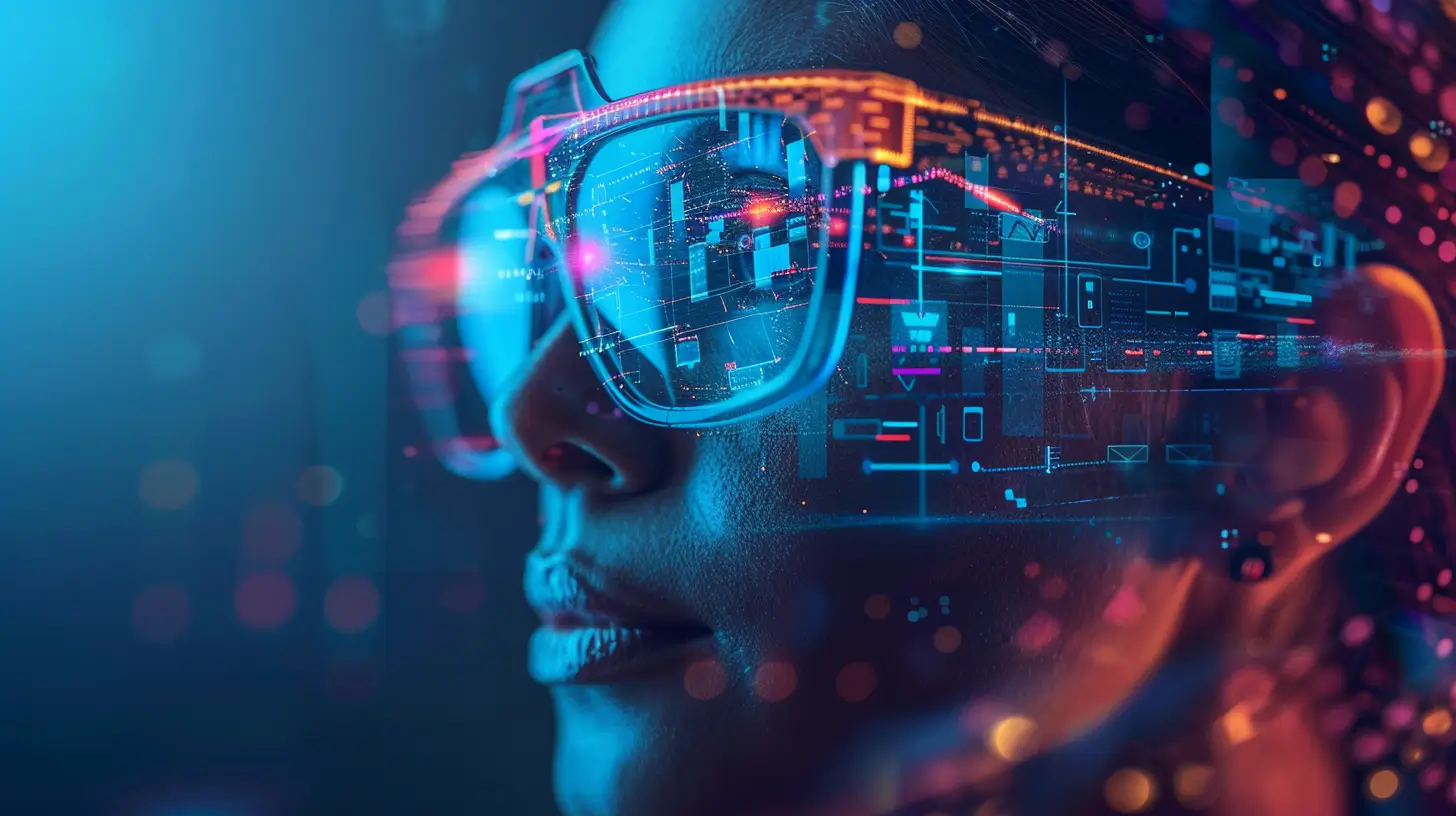Inclusive Communities: Support for the Visually Impaired Community
2023-12-12 | By Orcam Staff
.png)
Introduction to Visual Impairment
Understanding Visual Impairment: A Brief Overview
Visual impairment encompasses a wide range of conditions, from partial vision loss to complete blindness. Understanding the nature of visual impairment is essential for fostering supportive and inclusive communities.
The Spectrum of Visual Disabilities
The spectrum of visual disabilities varies greatly, including conditions like cataracts, glaucoma, and retinal diseases. Each condition presents unique challenges, making it crucial for communities to adapt and provide tailored support.
The spectrum of visual disabilities encompasses a range of conditions, each presenting its own set of challenges. Among the most common visual impairments are cataracts and glaucoma. Cataracts, characterized by the clouding of the eye's lens, are a leading cause of vision loss, especially in older adults. Glaucoma, another prevalent condition, involves increased pressure in the eye, leading to optic nerve damage. These conditions significantly impact daily living, emphasizing the importance of community adaptation and the provision of tailored support to those affected. By recognizing and addressing the specific needs associated with these common visual disabilities, communities can enhance accessibility and improve the quality of life for those living with these challenges.
Historical Perspective on Visual Impairment
Milestones in Visual Impairment Advocacy
Significant milestones in visual impairment advocacy include the establishment of organizations like the American Foundation for the Blind and the enactment of laws such as the Americans with Disabilities Act. These milestones have been pivotal in advancing the rights and opportunities for the visually impaired.
Statistics and Demographics
Global and Local Statistics on Visual Impairment
Globally, millions are affected by visual impairment, with a significant number living in developing countries. Understanding these statistics helps in directing resources and support where they are most needed.
Demographic Trends and Predictions
Demographic trends indicate an increase in visual impairment due to aging populations and lifestyle-related conditions. These trends underscore the growing need for comprehensive support systems.
Challenges Faced by the Visually Impaired
Social and Emotional Impacts
Visual impairment can lead to social isolation and emotional stress. Supportive communities play a crucial role in mitigating these impacts by promoting social inclusion and mental well-being.
Inclusive Communities: Definition and Importance
What Makes a Community Inclusive?
An inclusive community is one that accommodates and embraces individuals of all abilities. This includes accessibility in physical spaces, opportunities for participation in community activities, and support systems that cater to the needs of the visually impaired.
Benefits of Inclusive Communities for All
Inclusive communities offer benefits for everyone, not just those with disabilities. They foster empathy, diversity, and a sense of belonging. Moreover, inclusive practices often lead to innovations that improve life for the entire community.
Designing Inclusive Spaces
Principles of Universal Design
Universal design principles are essential in creating spaces accessible to all, regardless of ability. These principles include simple and intuitive use, flexibility in use, and equitable use.
Case Studies: Successful Inclusive Community Projects
There are numerous case studies of communities that have successfully implemented inclusive designs. These examples serve as models for others looking to make their spaces more accessible to the visually impaired.
Public Transportation and Accessibility
Navigating Public Transportation: Challenges and Solutions
Public transportation can be a significant hurdle for the visually impaired. Solutions include audible announcements, tactile paving, and training for staff to assist visually impaired passengers.
Innovative Public Transportation Initiatives
Around the world, innovative initiatives are making public transportation more accessible. Examples include apps that provide real-time navigation assistance and programs that offer personalized travel training.
Healthcare and the Visually Impaired
Navigating Healthcare Systems
Accessing healthcare can be challenging for the visually impaired. Barriers include physical accessibility of healthcare facilities and the availability of information in accessible formats.
Innovations in Healthcare for the Visually Impaired
Innovative healthcare solutions for the visually impaired include telemedicine services, specialized equipment, and training for healthcare professionals in accommodating visually impaired patients.
Sports and Recreation
Adaptive Sports and Activities
Adaptive sports provide opportunities for physical activity and social engagement for the visually impaired. Sports like goalball and tandem cycling are specifically designed to be accessible.
Highlighting Achievements in Sports by Visually Impaired Athletes
Visually impaired athletes have achieved remarkable successes in various sports. Highlighting these achievements not only celebrates their accomplishments but also inspires others in the visually impaired community.
Cultural Representation and Media
Representation in Media and Culture
Representation of visually impaired individuals in media and culture plays a crucial role in shaping public perceptions. Positive and accurate representation can help dismantle stereotypes and promote inclusivity.
Impact of Positive Role Models
Positive role models in media who are visually impaired can inspire and empower others. These role models demonstrate that visual impairment is not a limitation to achieving one's goals.
Community Support and Resources
Local and Online Support Networks
Local and online support networks provide invaluable resources and a sense of community for the visually impaired. These networks offer everything from practical advice to emotional support.
Resources for Families and Caregivers
Families and caregivers of visually impaired individuals also need support. Resources include training programs, support groups, and access to information on best care practices.
Advocacy and Raising Awareness
Key Advocacy Groups and Their Impact
Advocacy groups play a pivotal role in supporting the visually impaired. They work towards policy changes, provide resources, and raise public awareness about the challenges and capabilities of visually impaired individuals.
Strategies for Raising Awareness
Effective strategies for raising awareness about visual impairment include community events, educational campaigns, and partnerships with media outlets. These strategies help in building understanding and empathy in the broader community.
Volunteering and Community Involvement
Opportunities for Volunteering
Volunteering offers a chance to directly contribute to the well-being of the visually impaired community. Opportunities range from assisting in specialized programs to participating in advocacy efforts.
Personal Stories of Making a Difference
Personal stories of volunteers making a difference in the lives of visually impaired individuals can be powerful. These stories inspire others to get involved and contribute to their communities.
Innovative Approaches in Support
Case Studies of Innovative Support Programs
Innovative support programs around the world provide new ways of assisting the visually impaired. These case studies showcase creative solutions to challenges faced by this community.
Future Trends in Support for the Visually Impaired
Looking ahead, future trends in support for the visually impaired include advancements in technology, greater emphasis on inclusive policies, and increased public awareness and involvement.
The Role of Government in Supporting the Visually Impaired
Government Initiatives and Programs
Government initiatives and programs play a crucial role in providing support to the visually impaired. These range from funding for accessibility projects to laws that protect the rights of individuals with disabilities.
Evaluating the Effectiveness of Government Support
Evaluating the effectiveness of government support helps in identifying areas for improvement. This evaluation is essential for ensuring that resources are being used effectively to support the visually impaired community.
Global Perspectives on Supporting the Visually Impaired
Comparing Approaches in Different Countries
Different countries have unique approaches to supporting the visually impaired. Comparing these approaches provides valuable insights into effective strategies and practices.
Lessons Learned from Global Initiatives
Global initiatives in support of the visually impaired offer lessons in collaboration, innovation, and advocacy. These lessons can be applied to improve support systems worldwide.
The Impact of COVID-19 on the Visually Impaired Community
Challenges and Adaptations During the Pandemic
The COVID-19 pandemic presented unique challenges for the visually impaired, including disruptions in services and increased isolation. However, it also led to adaptations such as remote support services and online communities.
Lessons Learned for Future Crises
The pandemic has provided important lessons for supporting the visually impaired during crises. These lessons will be valuable in preparing for and responding to future challenges.
Inclusive Education Practices
Best Practices in Inclusive Education
Inclusive education practices ensure that visually impaired students receive the support they need to succeed. Best practices include individualized learning plans and accessible learning materials.
Success Stories from Schools and Universities
Schools and universities have successfully implemented inclusive education practices. Success stories from these institutions serve as models for others striving to provide equitable education.
Building Stronger Communities Through Inclusivity
Strategies for Building Inclusive Communities
Building inclusive communities involves strategies such as community engagement, accessible infrastructure, and inclusive policy-making. These strategies ensure that all members, including those who are visually impaired, can fully participate in community life.
Case Studies of Community Transformation
Case studies of communities that have transformed into more inclusive spaces provide inspiration and practical guidance for others. These communities demonstrate the positive impact of inclusivity on the quality of life for all residents.
Conclusion
In conclusion, supporting the visually impaired community is not just a matter of providing assistance but creating an environment where everyone can thrive. By understanding the challenges, embracing technology, advocating for rights, and building inclusive communities, we can ensure that individuals with visual impairments lead fulfilling, independent lives. The journey towards inclusive communities is ongoing, but with continued effort and understanding, we can make significant strides in supporting the visually impaired community.
More Stories

Veterans Associations and How They Can Help You - OrCam
2024-06-24 | By OrCam Staff

Top AI Assistive Technologies Enhancing Accessibility | OrCam
Explore how AI-driven assistive technologies are revolutionizing accessibility for individuals with disabilities.
2024-05-29 | By OrCam Staff

AI in Education: Enhancing Accessibility for All Students | OrCam
AI is changing the face of education by enhancing accessibility. Explore practical applications and success stories in educational technology.
2024-05-28 | By OrCam Staff

Revolutionizing Accessibility: How AI & IoT Enhance Assistive Technology
Explore the impact of AI and IoT on assistive tech, transforming accessibility and empowering lives with smart innovations.
2024-05-28 | By OrCam Staff

Transforming Lives: AI & IoT in Assistive Tech | Personal Stories
Read inspiring personal stories about the transformative power of AI and IoT in assistive technology.
2024-05-28 | By OrCam Staff

Unlock Reading Freedom: Tech for the Visually Impaired
Explore the latest in assistive technology designed to empower visually impaired individuals with independence and confidence.
2024-05-23 | By OrCam Staff



